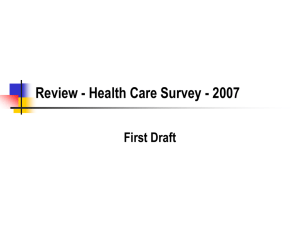4) Health care plans 1
advertisement
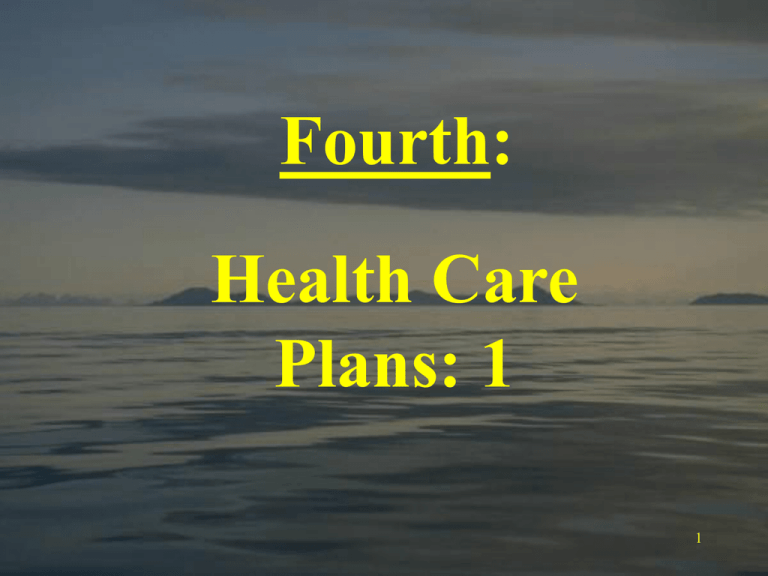
Fourth: Health Care Plans: 1 1 The Economics of Health Care: • Price rationing occurs because buyers base purchasing decisions on the relative quality and price of the good as well as on their willingness and ability to pay. • Adverse selection leads to individuals with lower risks subsidizing those with greater risks. • Moral hazard problem (when consumer’s perception of cost is less it is actual price) inflates the demand for medical services relative to the demand for services when buyers pay the full price for care. This can be mitigated by transferring some of the cost to the policyowner. 2 • Providers have an incentive to recommend and perform more health services (supplier-induced demand) • Barrier to entry contribute to monopoly power among providers, which can increase price and lower the quality of services provided. • Cultural beliefs about the nature of health care ( right or privilege) are important factors that shape the health care financing system of a given country. 3 • • The rapid and continuing advances in medical technology requiring continuous capital expenditures. The increased incidence of medical malpractice claims has caused physician malpractice insurance costs to rise, and these costs are ultimately passed on to consumers. 4 The Health Care Environment: Rising health care cost are a global phenomena. This was due to several reasons: • Increase in health care costs were at rates two times that of inflation • Individual live longer • Increased demand for quality health care and state-of-art treatment • The shift to outpatient surgery has been accompanied by dramatic increased demand 5 Development of Managed Care: The escalate cost of health care has led to emergence of Managed Care. • There are different types of managed care such as health maintenance organizations (HMOs), preferred provider organizations (PPOs), exclusive provider organizations, and various forms of provider-sponsored organizations (PSOs) 6 • Characteristics of managed care: – Direct relationship and interdependence between provision of and payment for health care – Provider network is formed in managed care – Providers are paid in preset amount, a common method is capitation – Use of financial incentives. Physicians may be penalized financially if they order a hospital stay, give a referral to a specialist, or order expensive tests. 7 Health Insurance Providers: There are five principle sources for health insurance: 1. Commercial insurers, 2. Blue Cross and Blue Shield organizations, 3. Managed care organizations, and 4. Self-insured plans. 5. Federal or state government (such as Medicare, Medicaid, military personal) 8 Commercial Insurance Companies: These are stock and mutual corporations and designed as life, property and causality, or health insurance companies to provide medical expense and disability income insurance on group and individual basis. • Payment of benefits directly to the insured, unless the insured assigned the payment to the provider. 9 Blue Cross and Blue Shield Plans: Operate mostly as nonprofit hospital and medical services corporations. With lower premiums from a favored tax status and have a close ties with hospitals and organized medical societies in the locality they serve. Blue Cross: are non profit hospital expense plans. Most plans were organized by the hospitals in the area served by the plan • The provide for hospital care on a service-type basis • The subscribers are billed only for not covered services. And no direct payment to subscribers • Blue Cross enters into contracts separately with member hospitals 10 Blue Shield: are nonprofit organizations offering prepayment coverage for surgical and medical services performed by physician. Major medical coverage is available on both Blues plans, on both group and individual basis. 11 Managed Care Organizations: Health maintenance organizations (HMOs): it is responsible for both financing and delivering of comprehensive health care services to a defined group of member for a prepaid, fixed fee. Five models of HMO are staff, group, network, individual practice association, and direct contract. 12 Preferred Provider Organizations (PPO): Are group of health care providers that contract with employers, insurance companies, union trust funds, or others to provide medical services at a reduced, negotiated fee. It differ form HMO in the fact that: – The provide benefits on a fee-for-service basis as their services are used. Fees are usually subject to a schedule that is the same for all participant – Participants have a financial incentives to use preferred provider network – Access to specialist is not controlled by primary 13 physician Exclusive Provider Organizations (EPO): Similar to PPO in their organization and purpose but limit their participants to participating providers. Point-of-Service Plans (POS): A participant's access to a provider network is controlled by a primary care physician. Participants retain the option to seek care outside the network but at a reduced coverage levels. 14 Physician-hospital organizations (PHO’s): Organizations that are jointly owned and operated by hospitals and physicians and typically are developed to provide a vehicle for hospital and physicians to contract together with other managed care organizations to provide both physician and hospital services. 15 Self –Insured Plans: Employees have increasingly adopted funding methods that are alternatives to the traditional group insurance contract. • Both medical expense and disability income insurance are made available through selfinsured or self-funded plans of employers. • The plans may require enrolled member to share in the funding 16 The End 17
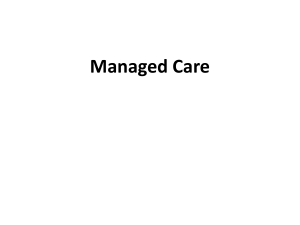

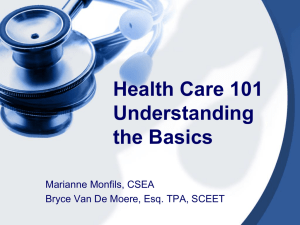
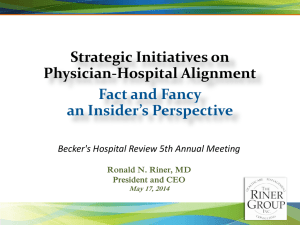
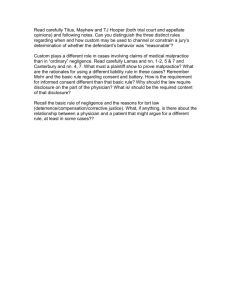
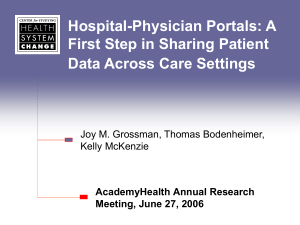

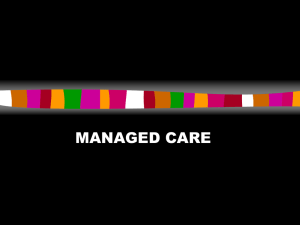
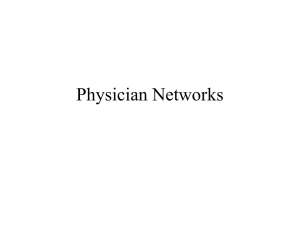
![[source]](http://s2.studylib.net/store/data/015396650_1-f1acc7042a9d63c06dcb7c0729147336-300x300.png)

